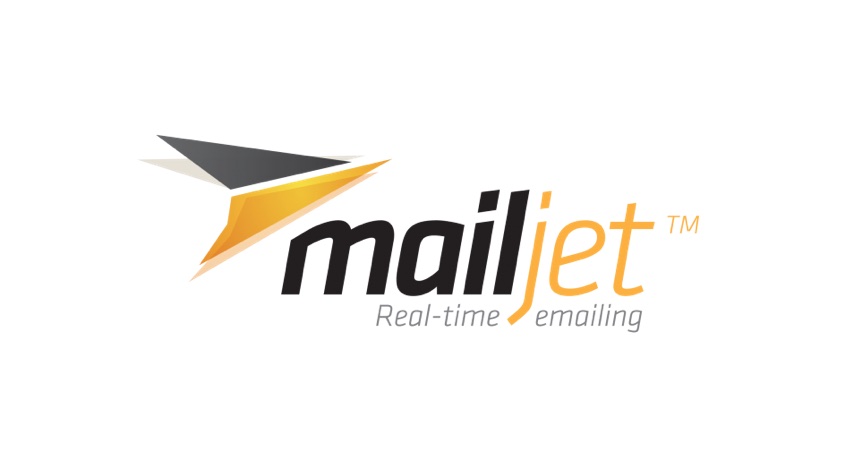Email marketing remains an indispensable tool in the digital marketer’s toolbox in 2024. With a plethora of options available, the choice between different platforms can be overwhelming. Two notable contenders in this arena are Mailjet and Mailshake. Both have carved out substantial niches in the email marketing world, but which one stands out as the best option for this year? This article dives deep into the features, usability, and overall effectiveness of Mailjet and Mailshake, offering insights to help you make an informed choice.
| Mailjet | Mailshake |
|---|---|
 |  |
| G2 Score – 4.0 out of 5 stars | G2 Score – 4.7 out of 5 stars |
| TrustRadius Score – 7.9 out of 10 | TrustRadius Score – 8.6 out of 10 |
Ease of Use: A Key Factor in Choosing an Email Marketing Tool
When selecting an email marketing tool, ease of use is a crucial factor. It’s not just about having a range of features; it’s about how accessible and user-friendly these features are. In this section, we compare Mailjet and Mailshake in terms of their user interfaces, template designs, and overall user experience.
Mailjet’s User Interface: A Closer Look
Mailjet is known for its intuitive user interface. The dashboard is clean and straightforward, making navigation a breeze even for beginners. One of the highlights of Mailjet’s UI is its drag-and-drop email editor. This feature allows users to create professional-looking emails without needing any technical knowledge or design skills. The editor provides a variety of templates, but what sets it apart is its flexibility. You can customize templates to a great extent, allowing for a high degree of personalization in your email campaigns.
Moreover, Mailjet’s dashboard provides an easy-to-understand overview of your email campaigns. You can quickly see how your emails are performing with metrics like open rates, click-through rates, and more displayed prominently. This immediate access to performance data is invaluable for marketers looking to make quick, data-driven decisions.
Mailshake’s Simplicity and Efficiency
On the other side, Mailshake takes a slightly different approach. It’s designed with simplicity in mind, targeting users who prefer a more straightforward, no-frills experience. Mailshake’s interface is less about visual design and more about efficiency. It offers a range of pre-built templates, but unlike Mailjet, the focus is on simplicity rather than customization. This approach is particularly beneficial for users who want to set up and run campaigns quickly without getting bogged down in design details.
Mailshake also excels in its campaign management features. Setting up a new campaign is extremely straightforward, and managing ongoing campaigns is equally efficient. The platform offers excellent tools for follow-up emails, a key component of effective email marketing. The automated follow-up feature allows users to schedule a series of emails based on recipient actions, such as opening an email or clicking a link. This automation saves time and increases the chances of engaging with your audience effectively.
Comparing the User Experience
Both Mailjet and Mailshake offer unique user experiences. Mailjet is the go-to for those who prioritize design and customization in their email campaigns. Its user interface is more visually appealing, and the drag-and-drop editor is a standout feature for creating customized, brand-aligned emails. On the other hand, Mailshake appeals to users who value simplicity and efficiency. Its straightforward interface and focus on campaign management and automation make it ideal for users who want to get their campaigns up and running with minimal fuss.
In conclusion, when it comes to ease of use, your choice between Mailjet and Mailshake depends on your specific needs. If customization and design flexibility are your priorities, Mailjet is the better option. However, if you prefer a more straightforward, efficient tool for quick campaign setup and management, Mailshake is the way to go.
Deliverability: Ensuring Your Emails Reach the Inbox
Deliverability is a critical aspect of email marketing. It’s not just about sending emails; it’s about making sure they land in your recipients’ inboxes and not their spam folders. In this section, we’ll explore how Mailjet and Mailshake handle deliverability, a key determinant of the success of your email campaigns.
Mailjet’s Approach to Deliverability
Mailjet has invested heavily in its deliverability capabilities. One of its standout features is the advanced email routing system, which automatically optimizes the sending path of your emails. This system increases the likelihood of your emails reaching the inbox by avoiding known spam traps and filters.
Additionally, Mailjet provides users with detailed deliverability analytics. These insights allow you to understand better why certain emails might be marked as spam and how you can improve your email content and sending practices. Mailjet also offers a dedicated IP option for high-volume senders, which can significantly improve deliverability rates by isolating your email traffic from other users.
Mailshake’s Focus on Deliverability
Mailshake, while simpler in its user interface, does not lag behind in deliverability. It provides users with smart sending options that help avoid spam filters. For instance, Mailshake’s algorithm can space out email sends over time, mimicking human sending patterns, which reduces the risk of triggering spam filters.
One of Mailshake’s most practical features is its built-in email warm-up. This process gradually increases your sending volume over time, helping to establish your sender reputation. This is particularly useful for new users or those who have recently switched to a new email domain.
Assessing Deliverability Success
In assessing the deliverability of Mailjet and Mailshake, it’s clear both platforms take this issue seriously, employing different strategies to ensure emails reach their intended inboxes. Mailjet’s advanced routing system and detailed analytics are ideal for users who want granular control over their email deliverability. The ability to delve into data and adjust strategies accordingly can be a significant advantage.
On the other hand, Mailshake’s intuitive and automated approach to deliverability is perfect for users who prefer a more hands-off approach. Its warm-up feature and smart sending options take much of the guesswork out of building a strong sender reputation.
Ultimately, both Mailjet and Mailshake provide robust deliverability options. Your choice depends on your preference for either a data-driven, hands-on approach (Mailjet) or a more automated, user-friendly strategy (Mailshake).
Integration Capabilities: Expanding Your Email Marketing Ecosystem
In today’s digital marketing landscape, integration capabilities of an email marketing tool with other software and platforms can greatly amplify its effectiveness. This aspect is particularly important for businesses looking to create a seamless marketing ecosystem. Let’s examine how Mailjet and Mailshake fare in terms of integration with other tools and platforms.
Mailjet’s Integration Ecosystem
Mailjet’s strength lies in its robust integration capabilities. It offers seamless integrations with a wide range of CRM (Customer Relationship Management) systems, e-commerce platforms, and other marketing tools. This level of integration is particularly beneficial for businesses that rely on a suite of tools to manage their marketing and sales processes.
For example, integrating Mailjet with a CRM system allows for the synchronization of contact lists and segmentation data. This integration means you can create more targeted and personalized email campaigns based on customer data from your CRM. Similarly, integration with e-commerce platforms enables transactional emails and targeted promotions based on purchase history and customer behavior.
Mailshake’s Integration Features
Mailshake, while maintaining a simpler interface, does not fall short in its integration capabilities. It focuses on essential integrations that enhance the functionality of its core offerings. For instance, Mailshake integrates well with leading CRM systems, allowing for easy import and export of contact data.
One of Mailshake’s notable integration features is its compatibility with LinkedIn, a valuable tool for B2B marketers. This integration allows users to synchronize their LinkedIn contacts with Mailshake, enabling more personalized outreach and follow-up campaigns. Additionally, Mailshake’s API allows for custom integrations, offering flexibility for businesses with specific integration needs.
Comparing Integration Capabilities
When comparing Mailjet and Mailshake on integration capabilities, it’s evident that both platforms offer a range of options to enhance their core email marketing functions. Mailjet’s wide array of integrations makes it an ideal choice for businesses that rely on a complex marketing tech stack. Its ability to integrate with various platforms means you can centralize and streamline your marketing efforts effectively.
On the other hand, Mailshake’s focused approach to integration, especially its LinkedIn compatibility, makes it a strong contender for B2B marketers and sales professionals. Its simpler integration ecosystem is well-suited for businesses that require a more straightforward setup without the need for extensive integrations.
In summary, your choice between Mailjet and Mailshake in terms of integration capabilities should be guided by the complexity of your existing marketing tech stack and the specific platforms you need to integrate with. Mailjet is ideal for a more complex, multi-tool environment, while Mailshake suits those who need essential integrations with a focus on simplicity and efficiency.

Related: Check out our free SEO suite

Customer Support and Learning Resources: Navigating Challenges and Enhancing Skills
Effective customer support and comprehensive learning resources are vital for any email marketing tool, especially as businesses navigate the complexities of digital marketing. In this section, we’ll compare Mailjet and Mailshake in terms of their support systems and educational materials, key components for both novice and experienced marketers.
Mailjet’s Support and Educational Offerings
Mailjet takes customer support seriously, offering various channels, including email, live chat, and a comprehensive knowledge base. The live chat feature is particularly noteworthy for providing quick responses to urgent queries. This immediacy can be crucial for businesses that rely on timely email campaigns.
In terms of educational resources, Mailjet offers an extensive collection of guides, tutorials, and blog articles. These resources cover a wide range of topics, from basic email marketing principles to advanced strategies. Furthermore, Mailjet regularly updates its blog with industry trends and tips, keeping users informed about the latest in email marketing.
Mailshake’s Approach to Customer Support and Education
Mailshake also provides robust customer support, with a focus on accessibility. The platform offers email support and an extensive FAQ section. While it may lack a live chat option, Mailshake’s support team is known for their responsiveness and helpfulness via email.
When it comes to educational resources, Mailshake shines with its practical, action-oriented content. The platform offers a wealth of case studies, how-to guides, and video tutorials. These resources are particularly geared towards sales professionals and B2B marketers, providing insights into effective outreach and lead generation strategies.
Evaluating the Support and Learning Experience
In evaluating both platforms, it’s clear that Mailjet and Mailshake place a high value on supporting their users. Mailjet’s live chat feature and comprehensive educational content make it an excellent option for businesses that need immediate support and a broad range of learning materials. This support is particularly beneficial for teams looking to expand their email marketing knowledge and skills.
Mailshake, with its targeted educational content, is ideal for users focused on sales and B2B marketing. Its case studies and tutorials are highly practical, providing users with actionable strategies they can apply to their campaigns. While the lack of a live chat option might be a downside for some, the quality and responsiveness of their email support compensate for this.
In conclusion, both Mailjet and Mailshake offer solid customer support and learning resources, but their strengths cater to different needs. If immediate support and a wide range of educational materials are your priorities, Mailjet is the better choice. However, if you’re looking for practical, sales-oriented content and responsive email support, Mailshake would be more suitable.
Pricing Structures: Understanding the Cost of Email Marketing Success
The pricing structure of an email marketing tool is a crucial consideration for businesses of all sizes. It’s not just about the cost, but also about the value and scalability the platform offers. Let’s delve into the pricing models of Mailjet and Mailshake to see how they align with different business needs.
| Mailjet | Free Plan: Includes up to 6,000 emails per month (with a daily limit of 200) and unlimited contacts. Basic features like email creation and sending are included. Essential Plan: Starting at around $15/month for 15,000 emails per month. This plan removes the daily sending limit and includes online customer support, no Mailjet logo, and sub-accounts. Premium Plan: Starting at around $25/month for 15,000 emails per month. Includes additional features like segmentation, A/B testing, marketing automation, and multi-user collaboration. Custom Enterprise Solutions: Offers custom volume of emails with advanced features and dedicated support. Pricing is custom and based on specific requirements. |
| Mailshake | Email Outreach Plan: Priced at $59/user/month when billed annually. Includes features like email personalization, lead catchers, and analytics. Sales Engagement Plan: Priced at $99/user/month when billed annually. Includes additional features like phone dialer, social selling, and Salesforce integration. Both plans offer features tailored for sales teams and agencies focusing on cold email outreach and sales engagement. |
Mailjet’s Pricing Model
Mailjet’s pricing is structured around a tiered model, which is based on the number of emails sent per month and the level of features required. This model offers flexibility, allowing businesses to scale up or down depending on their needs. The basic plan is quite affordable, making it accessible for small businesses or startups.
One of the advantages of Mailjet’s pricing structure is the availability of a free tier. This tier allows users to send a limited number of emails per month without any cost, which is an excellent option for businesses just starting with email marketing. As you scale up, the pricing increases, but so does the access to more advanced features like A/B testing, segmentation, and dedicated IP addresses.
Mailshake’s Pricing Approach
Mailshake takes a straightforward approach to pricing, offering a couple of plans with clear distinctions in features. Unlike Mailjet, Mailshake doesn’t have a free tier, but its starting plan is reasonably priced, targeting small to medium-sized businesses.
Mailshake’s pricing is primarily based on the number of users rather than the volume of emails, which can be advantageous for teams with high email outreach volumes. This model is particularly beneficial for sales teams and B2B marketers who may not have a massive volume of emails but require robust campaign management and automation features.
Comparing Cost-Effectiveness
When comparing the cost-effectiveness of Mailjet and Mailshake, consider both your email volume and the specific features you need. Mailjet is a great option for businesses that are price-sensitive and need a scalable solution. Its free tier is especially appealing for those just starting out or with limited email marketing needs.
In contrast, Mailshake’s user-based pricing model is ideal for teams that have a consistent volume of outreach and need advanced campaign management tools. Although it lacks a free tier, the value provided in its paid plans can justify the cost, especially for sales-focused teams.
In summary, your choice between Mailjet and Mailshake in terms of pricing should align with your business size, email volume, and specific feature requirements. Mailjet offers greater flexibility and scalability, especially for growing businesses, while Mailshake’s straightforward pricing can be more cost-effective for teams with consistent email outreach needs.
Analytics and Reporting: Gaining Insights into Email Campaign Performance
In the realm of email marketing, the ability to track and analyze campaign performance is invaluable. Analytics and reporting features not only provide a snapshot of how your campaigns are doing but also offer insights to refine and improve your strategies. Let’s compare how Mailjet and Mailshake approach analytics and reporting.
Mailjet’s Analytics Capabilities
Mailjet offers a comprehensive suite of analytics tools. Users can track standard metrics like open rates, click-through rates, and unsubscribe rates. But Mailjet goes beyond these basics. It provides advanced analytics like geolocation tracking, which shows where your emails are being opened, and device tracking, which indicates whether emails are opened on mobile devices or desktops.
One of the standout features of Mailjet’s analytics is its real-time monitoring capability. This feature allows users to see how their campaigns are performing as soon as emails are sent, enabling quick adjustments if needed. Additionally, Mailjet offers customizable reports, so you can focus on the metrics that matter most to your business.
Mailshake’s Reporting Features
Mailshake’s approach to analytics and reporting is focused on simplicity and actionability. While it covers all the fundamental metrics like open and click rates, its strength lies in how it presents this data. The dashboard is user-friendly, displaying key metrics in an easily digestible format.
A unique aspect of Mailshake’s reporting is its focus on sales outcomes. For example, it tracks metrics like reply rates and lead generation, which are crucial for sales-oriented email campaigns. This focus makes Mailshake’s analytics particularly valuable for sales teams and B2B marketers who need to understand how their email outreach translates into business results.
Evaluating Analytics and Reporting
In evaluating the analytics and reporting features of Mailjet and Mailshake, it’s clear that both platforms cater to different needs. Mailjet’s advanced analytics and real-time tracking are ideal for marketers who need detailed insights and the ability to adjust campaigns on the fly. Its customizable reports are also beneficial for businesses that require specific data to inform their strategies.
On the other hand, Mailshake’s straightforward, sales-focused reporting makes it a strong option for teams that need to directly link email campaign performance to sales results. Its user-friendly dashboard ensures that even users without a deep background in analytics can understand and act on the data.
In conclusion, your choice between Mailjet and Mailshake in terms of analytics and reporting should depend on the depth and focus of insights you require. If detailed, real-time analytics are crucial for your campaigns, Mailjet is the way to go. However, if you need clear, actionable insights focused on sales outcomes, Mailshake would be more appropriate.
Conclusion
In conclusion, choosing between Mailjet and Mailshake for your email marketing in 2024 boils down to understanding your specific needs and preferences. Both platforms offer robust features, but they cater to different user profiles and objectives. Mailjet is a comprehensive tool that excels in customization, advanced analytics, and integration capabilities. Its user-friendly interface, combined with a wide array of features, makes it suitable for businesses seeking a scalable and versatile email marketing solution. The option of a free tier also makes Mailjet an attractive choice for startups or small businesses with limited budgets.
Mailshake, on the other hand, is tailored more towards simplicity and efficiency, particularly appealing to sales teams and B2B marketers. Its focus on practical, sales-oriented features, easy-to-understand analytics, and straightforward pricing model make it a go-to for users who prioritize quick campaign setup and clear insights into sales outcomes. Ultimately, your decision should align with your business’s size, the complexity of your marketing strategies, and the specific features you value most. Mailjet is the ideal choice for those who desire a feature-rich platform with extensive customization options. Mailshake is better suited for those who prefer a streamlined, sales-focused tool.
In the ever-evolving world of email marketing, both Mailjet and Mailshake stand out as top contenders in 2024. By carefully considering your unique requirements and the strengths of each platform, you can choose the tool that best aligns with your email marketing goals and drives your business towards success.
Read Next:
- Mailjet vs SendinBlue: The Best Email Marketing Tool for 2024
- Mailjet vs Pabbly Email Marketing: The Best Email Marketing Tool for 2024
- Mailjet vs Zoho Campaigns: The Best Email Marketing Tool for 2024
- Mailjet vs SendGrid: The Best Email Marketing Tool for 2024
- Mailjet vs Klaviyo: The Best Email Marketing Tool for 2024






















Comments are closed.